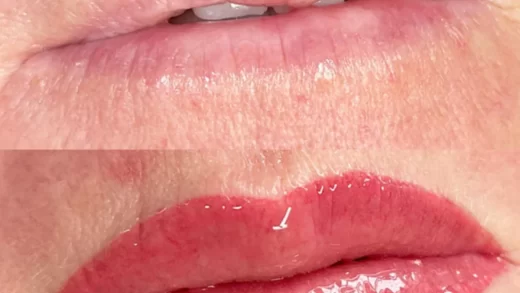Tattoos have become increasingly popular in recent years, with more and more people getting inked. However, there are also many individuals who regret their decision to get a tattoo and want to have it removed. The question is, can tattoos be completely removed?
The process of tattoo removal
Tattoo removal is a process that involves breaking down the tattoo ink particles and allowing the body to eliminate them. There are several methods of tattoo removal available, including laser removal, surgical excision, dermabrasion, and chemical peels.
Laser removal
Laser tattoo removal is the most popular and effective method. It works by targeting the tattoo ink with laser light, which breaks the ink particles into tiny fragments. The body’s immune system then flushes out these fragments over time.
However, it’s important to note that laser tattoo removal is not a one-time treatment. Multiple sessions are usually required to achieve satisfactory results. The number of sessions depends on several factors, such as the size and color of the tattoo, as well as the individual’s skin type.
Surgical excision
Surgical excision involves cutting out the tattooed skin and stitching the surrounding skin back together. This method is often used for smaller tattoos or those that are located in a specific area. While surgical excision can remove the tattoo completely, it may result in scarring and may not be suitable for larger tattoos.
Dermabrasion and chemical peels
Dermabrasion and chemical peels are methods that involve removing the top layers of the skin to reach the tattoo ink. These methods can be painful and may also result in scarring.

Limitations of tattoo removal
While tattoo removal techniques have advanced over the years, it’s important to note that complete tattoo removal is not always possible.
The success of tattoo removal depends on several factors, including the tattoo’s age, location, size, color, and the individual’s skin type. Older tattoos, for example, are generally easier to remove than newer ones.
Additionally, certain colors, particularly lighter ones like yellow and pastel shades, are more challenging to remove than dark colors like black and blue. Some tattoo pigments may also be resistant to certain removal methods.
While tattoo removal has come a long way, it’s important to have realistic expectations. Complete tattoo removal may not always be possible, and the process can be time-consuming, costly, and may result in scarring.
If you’re considering getting a tattoo, it’s important to think it through and choose a design that you’ll be happy with for years to come. However, if you do have a tattoo that you regret, there are options available for removal. Consult with a professional tattoo removal specialist to discuss the best course of action for your specific tattoo.


